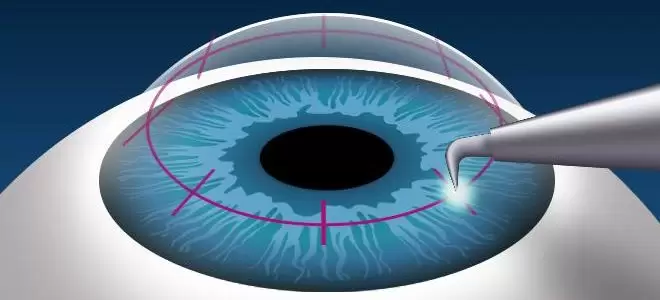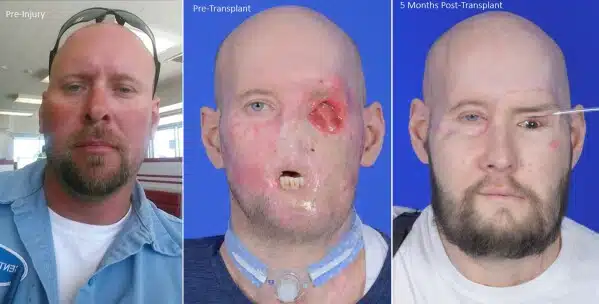Table of Contents

The Ultimate Guide to Retina Transplant in Turkey: Safety, Cost, Benefits & Surgery in Turkey
The retina is a thin layer of tissue at the back of the eye that plays a crucial role in vision. It detects light and sends signals to the brain to produce visual images. Damage to the retina, whether from age-related macular degeneration, genetic disorders, or trauma, can cause serious vision impairment or blindness. Fortunately, modern medicine has made groundbreaking advances, including the possibility of retina transplant as a promising solution for certain types of vision loss.
This guide will walk you through everything you need to know about retina transplantation—what it is, who it’s for, the surgical process, recovery, safety, and how much it costs, especially in top destinations like Turkey. Whether you’re actively seeking treatment or just exploring your options, this comprehensive article will help you make an informed decision.
Time in Turkey
7 to 14 days
Surgery Time
2 to 5 hours
Hospital Stay
1 to 3 days
Recovery
2 to 6 weeks
Accomodation
4/5* Hotels
Transportation
Private Driver
What is Retina Transplant in Turkey?
A Retina Transplant in Turkey is an advanced surgical procedure that involves replacing damaged or diseased retinal tissue with healthy donor or lab-grown retina cells. The goal is to restore some level of visual function in individuals suffering from conditions like:
- 1. Retinal degeneration (e.g., retinitis pigmentosa)
- 2. Age-related macular degeneration (AMD)
- 3. Severe retinal injury or scarring
Retina transplants are still considered a cutting-edge and highly specialized procedure, often conducted as part of clinical research or in very specialized centers. Some procedures also involve implanting artificial retinas (also known as retinal prostheses or bionic eyes), which are particularly useful for patients with complete vision loss.
Types of Retina Transplant in Turkey
There are several methods and technologies currently used or in development for retina transplants, each designed to address various retinal conditions and enhance visual outcomes. These approaches aim to either restore the function of damaged retinal cells or replace the retina with an artificial or bioengineered alternative. The different techniques focus on advancing the field of retinal surgery and improving the quality of life for individuals with retinal diseases:
1. Retinal Cell Transplantation
- Involves transplanting stem cell-derived retinal pigment epithelial (RPE) cells
- Helps support the existing retina and slow degeneration
- Commonly researched for age-related macular degeneration
2. Full-Thickness Retina Transplantation
- Involves transplanting a full section of donor retina
- Still highly experimental and performed in few global centers
3. Retinal Sheet Transplant
- Uses layers of lab-grown retinal tissue
- May be used in regenerative procedures with future potential
4. Artificial Retina (Retinal Prosthesis)
- Involves implantation of electronic chips (e.g., Argus II)
- Helps stimulate the remaining retina to provide partial vision
Each method is used for specific patient conditions and requires detailed consultation with a retinal specialist.
How to Book a Retina Transplant in Turkey
Retina transplant or retinal surgery in Turkey is performed by highly skilled ophthalmologists using advanced technology. If you are considering this procedure, follow these steps to book your treatment:
1. Research & Choose a Specialized Eye Clinic
■ Look for accredited hospitals and retina specialists in Turkey.
■ Check success rates, patient testimonials, and available technology.
■ Ensure the clinic specializes in retinal transplants or alternative retinal treatments, such as retinal implants or stem cell therapy (if applicable).
2. Contact the Clinic for Consultation
■ Most clinics offer free online consultations via video call or email.
■ Provide details about your eye condition, medical history, and previous treatments.
■ The doctor will assess your eligibility for a retina transplant or other suitable procedures.
3. Confirm Treatment Plan & Cost
■ Ask for a detailed cost estimate, including:
✔ Surgery fees
■ Hospital stay (if required)
■ Pre-op tests & post-op care
■ Discuss payment options and financing plans.
■ Some clinics offer all-inclusive packages with accommodation and airport transfers.
4. Plan Your Travel & Accommodation
■ Book your flight to Turkey (Istanbul, Ankara, or Izmir are common medical tourism hubs).
■ Many clinics assist with hotel bookings or offer VIP medical tourism packages.
■ Check visa requirements for your country.
5. Arrive & Undergo Pre-Surgery Examinations
■ Upon arrival, visit the clinic for comprehensive eye tests and imaging.
■ The doctor finalizes the surgery details and explains post-op care.
6. Undergo Retina Transplant Surgery
■ The procedure is performed under local or general anesthesia, depending on the case.
■ The surgery may involve retinal implants, stem cell therapy, or donor retinal tissue (if applicable).
■ Most patients require a short hospital stay for monitoring.
7. Post-Surgery Care & Follow-Up
■ Follow the doctor’s recovery guidelines, including prescribed eye drops and medications.
■ Avoid strenuous activities and bright lights for a few weeks.
■ A follow-up appointment ensures proper healing and vision improvement.
Why is Turkey a Popular Destination for Retina Transplant?
Turkey has become a popular destination for advanced eye care, particularly retina transplants and vision surgeries. The country attracts patients from Europe, the Middle East, and beyond due to its modern facilities, skilled ophthalmologists, and affordable prices. Patients are drawn to Turkey because of its internationally trained ophthalmologists and state-of-the-art technology. The country also offers comprehensive medical tourism packages, including accommodation, transport, and interpreter support, making it an attractive choice for those seeking high-quality, cost-effective care:
⬛ Highly qualified ophthalmologists trained internationally
⬛ Competitive retina transplant cost
⬛ State-of-the-art facilities equipped with the latest tech
⬛ No long waiting times
⬛ Medical tourism packages that include accommodation, transport, and interpreter support
Patients from Europe, the Middle East, and beyond choose Turkey for its cost-effectiveness and quality.
After & Befor Retina Transplant in Turkey




Retina Transplant Cost in Turkey vs. Other Countries
A retina transplant is a complex and highly specialized procedure designed to restore vision in patients with severe retinal damage or degenerative eye conditions. While still an evolving area of ophthalmology, advancements in medical technology have made retina transplants more accessible in certain countries. However, the cost of this procedure varies significantly depending on factors such as the country’s healthcare system, the expertise of the surgeon, the medical facility, and whether additional treatments, such as stem cell therapy or artificial retinal implants, are involved. Some countries offer more affordable options with high-quality care, while others may have higher costs due to advanced medical infrastructure and specialized expertise. Here’s how retina transplant costs compare across different countries. Here’s how retina transplant cost compares across countries:
Country | Average Cost (USD) | Inclusions |
Turkey | $5,000 – $12,000 | Surgery, hospital stay, medication, follow-ups |
USA | $20,000 – $50,000 | Surgery only |
UK | $18,000 – $40,000 | Surgery and post-op care |
Germany | $16,000 – $35,000 | Surgery + 1 follow-up |
India | $4,000 – $9,000 | Full package |
Note: Prices vary depending on the clinic, technology used, and procedure type.
Choosing the Right Clinic and Surgeon
Due to the complexity of retina transplants, it’s crucial to choose a clinic with experienced, board-certified retinal surgeons. The clinic should also be equipped with advanced imaging and surgical technology to ensure precise procedures. Comprehensive pre- and post-surgery care is essential for a smooth recovery, making it important to select a clinic that provides ongoing support throughout the treatment process. This ensures the best possible outcome and patient satisfaction.
⬛ A board-certified retinal surgeon with experience in advanced cases
⬛ Access to cutting-edge imaging and surgical equipment
⬛ A proven track record in treating complex retinal conditions
⬛ Access to clinical trials or approved prosthetic devices
⬛ A supportive multidisciplinary team (optometrists, technicians, rehab specialists)
What to Look for in a Retina Transplant Clinic
Choose a clinic that offers:
⬛ Reputation and Reviews
⬛ Look for clinics with a strong reputation in strabismus surgery. Check online reviews, patient testimonials, and before-and-after photos to gauge the clinic’s success rate and patient satisfaction. A clinic with a proven track record of successful surgeries and positive patient feedback is crucial.
⬛ Surgeon’s Qualifications and Experience
⬛ Ensure the surgeon is board-certified with specialized training in strabismus surgery. Experience is essential, so seek out a surgeon with a significant number of successful procedures. It’s also beneficial if they have experience handling complex cases.
⬛ Technology and Equipment Used
⬛ The clinic should be equipped with state-of-the-art technology and tools to perform strabismus surgery accurately and safely. Advanced diagnostic equipment, such as high-resolution imaging systems, allows for precise measurements and planning during the surgery.
⬛ Accreditation and Certification
⬛ Verify that the clinic holds proper accreditation from recognized medical institutions and health authorities. International certifications like JCI or ISO are indicators that the clinic meets high standards for safety, quality, and patient care.
⬛ Pre-Surgery Consultation and Eye Examination
⬛ A thorough pre-surgery consultation is essential to assess your condition and discuss the most suitable treatment options. The clinic should provide detailed eye examinations and answer all your questions about the procedure, expected results, and risks.
⬛ Post-Surgery Care and Follow-Ups
⬛ After the surgery, proper follow-up care is essential for monitoring recovery and ensuring the surgery’s success. Ensure that the clinic provides post-surgery visits and offers personalized care to address any concerns or complications.
⬛ Pricing and Transparency
⬛ Transparent pricing is important. The clinic should provide a clear breakdown of costs, including pre-surgery consultations, the surgery itself, anesthesia, hospital stay (if required), and post-surgery follow-ups. Compare pricing with other clinics, but remember that quality care should be the priority over cost alone.
Questions to Ask Your Surgeon Before the Procedure
⬛ About the Surgeon’s Experience
⬛ How many laser eye surgeries have you performed?
⬛ What is your success rate with LASIK/PRK/SMILE?
⬛ Are you a board-certified ophthalmologist?
⬛ About the Procedure
⬛ What type of laser surgery is best for my vision condition?
⬛ How does the surgery process work?
⬛ Will both eyes be treated on the same day or separately?
⬛ What kind of anaesthesia will be used?
⬛ About Risks and Expectations
⬛ What are the possible risks and complications I should be aware of?
⬛ How long does the healing process take?
⬛ Will my vision be perfectly clear immediately after surgery?
⬛ What is the likelihood of needing a follow-up enhancement procedure?
⬛ About Post-Surgery Care
⬛ What should I do before and after the procedure to ensure a smooth recovery?
⬛ How soon can I resume normal activities, including work, exercise, and travel?
⬛ What happens if I develop complications or experience vision changes after surgery?
⬛ About Pricing and Insurance
⬛ What is the total cost of the surgery, and what does it include?
⬛ Are there additional fees for consultations, medication, or follow-up visits?
⬛ Does the clinic offer payment plans or financing options?
⬛ Is the surgery covered by insurance, and do you assist with medical paperwork?
How to Book Penile Implant Surgery in Turkey
Booking penile implant surgery in Turkey is a simple process, thanks to the country’s advanced medical facilities, experienced urologists, and affordable prices. Follow these steps to ensure a smooth experience:
1. Research & Choose a Reputable Clinic
■ Look for accredited hospitals and specialized urology clinics in Turkey.
■ Check doctor qualifications, patient reviews, and success rates.
■ Ensure the clinic offers FDA-approved implants from trusted brands like AMS or Coloplast.
2. Contact the Clinic for Consultation
■ Most clinics offer online consultations via video call or email.
■ Provide details about your medical history and previous ED treatments.
■ The doctor will assess your condition and recommend the best implant type (inflatable or malleable).
3. Confirm Treatment Plan & Cost
■ Ask for a detailed price breakdown, including:
✔ Surgery cost
✔ Type of implant
✔ Hospital stay (if required)
✔ Pre-op tests & post-op care
■ Discuss payment options and refund policies in case of cancellations.
■ Some clinics offer all-inclusive packages with accommodation and airport transfers.
4. Plan Your Travel & Accommodation
■ Book a flight to Turkey (Istanbul, Ankara, or Antalya are common medical tourism hubs).
■ Many clinics provide hotel stays or assist in arranging accommodation near the hospital.
■ Check visa requirements for your nationality.
5. Arrive & Undergo Pre-Surgery Tests
■ Upon arrival, visit the clinic for pre-operative assessments (blood tests, ultrasound, etc.).
■ The doctor finalizes the surgery details and provides pre-op instructions.
6. Undergo the Surgery
■ The procedure takes about 1-2 hours under general or spinal anesthesia.
■ Patients typically stay in the hospital for 1 night for monitoring.
7. Post-Surgery Care & Follow-Up
■ Mild swelling and discomfort are normal for a few days.
■ Pain medications and antibiotics help with healing.
■ Normal activities can resume within a few days, while sexual activity should be avoided for 4-6 weeks.
■ A follow-up appointment ensures the implant is working properly.
Benefits of Retina Transplant
Laser eye surgery has become one of the most sought-after solutions for improving vision and reducing the need for corrective eyewear. It is particularly popular among individuals who are tired of relying on glasses or contact lenses for everyday tasks. This procedure uses advanced laser technology to correct common refractive errors like nearsightedness, farsightedness, and astigmatism, offering patients a chance to experience clearer, sharper vision. With its quick procedure time, minimal discomfort, and long-lasting results, laser eye surgery has revolutionized the way people approach vision correction, providing a life-changing solution that not only improves sight but also boosts confidence and overall quality of life.
⬛ Improved Vision
Laser eye surgery can correct common vision problems like nearsightedness, farsightedness, and astigmatism, leading to clearer and sharper sight. Many patients experience 20/25 vision or better, which is enough for most daily activities without glasses or contact lenses.
⬛ Quick and Convenient
The procedure is fast, typically taking 15 to 30 minutes for both eyes. Recovery is also quick, with many patients noticing immediate improvements in their vision. Most people can return to normal activities, including work, within a day or two.
⬛ No More Dependence on Glasses or Contact Lenses
Laser eye surgery eliminates the need for corrective eyewear, providing freedom from glasses and contacts. It’s particularly convenient for active individuals or those involved in sports, as there is no risk of glasses fogging, slipping, or breaking.
⬛ Long-Lasting Results
The changes in vision from laser eye surgery are generally permanent. Although some minor changes may occur over time, most patients enjoy stable, clear vision for years, resulting in long-term savings on glasses, contact lenses, and prescriptions.
⬛ Minimal Pain and Discomfort
The procedure is usually painless due to anaesthesia, and any discomfort post-surgery is typically mild and subsides within a day or two. The risk of significant pain or complications is low, especially when performed by an experienced surgeon.
⬛ Improved Quality of Life
Laser eye surgery can greatly improve quality of life by eliminating the need for glasses or contacts. Patients can enjoy outdoor activities, wake up with clear vision, and feel more confident without eyewear, often experiencing immeasurable positive changes in their daily lives.
⬛ Boost in Confidence and Self-Esteem
Not having to wear glasses can boost confidence and improve self-esteem, especially for individuals who feel self-conscious about their appearance when wearing corrective eyewear.
⬛ Low Risk of Complications
Laser eye surgery is one of the safest elective procedures, with a high success rate and a very low risk of serious complications. Even when issues occur, they can often be easily corrected with follow-up treatments.
⬛ Suitable for a Wide Range of People
Laser eye surgery can treat many individuals with mild to moderate refractive errors and those who have not had success with glasses or contacts. A thorough eye examination is necessary to determine your suitability for the procedure.
⬛ Quick Recovery Time
Recovery is swift, with most patients experiencing mild dryness or irritation for a few days. Most can return to regular activities within 24-48 hours, with vision continuing to improve over the next few weeks and final results becoming clear after 3-6 months.
Laser eye surgery offers a highly effective solution for improving vision, reducing reliance on corrective eyewear, and providing long-term benefits with minimal risks and a short recovery period. It remains a popular choice for many seeking a permanent solution to their vision problems.
Risks and Potential Side Effects
As with any advanced surgical procedure, a retina transplant carries certain risks and potential complications that should be carefully considered. These risks can vary depending on the type of transplant, the individual’s health, and the complexity of the procedure. Here are some of the key risks associated with retina transplantation:
1. Infection or Inflammation of the Eye
- Infection: One of the most common risks with any eye surgery, including retina transplants, is the potential for infection. Infection can occur if bacteria or other pathogens enter the eye during or after surgery. This can lead to severe complications, including vision loss if not addressed promptly.
- Inflammation: Post-surgical inflammation is also common. This inflammation can affect healing, and if it is not controlled, it can cause additional complications, such as scarring or fluid accumulation inside the eye.
2. Rejection of Donor Tissue
- In cases where the retina transplant involves donor tissue (either from a deceased donor or an artificial retina), there is a risk of the body rejecting the tissue. The immune system may recognize the donor tissue as foreign and attempt to attack it, leading to inflammation, graft failure, or loss of vision.
- This risk is particularly high in retinal cell transplants where donor cells are introduced into the eye. Immunosuppressive drugs are often required to minimize this risk.
3. Scar Formation
- Scarring can occur at the site of surgery, which may impede the proper function of the retina or the prosthetic implant. Scar tissue can form around the retina or artificial implant, leading to vision distortion or a decrease in visual clarity. This can reduce the overall effectiveness of the transplant, especially in patients with advanced retinal degeneration.
4. Increased Intraocular Pressure (Glaucoma)
- Glaucoma is a condition where the pressure inside the eye becomes too high, potentially damaging the optic nerve and leading to vision loss. This is a concern after any eye surgery, including retina transplants, especially if the procedure results in complications such as swelling or the formation of scar tissue.
5. Limited or No Vision Improvement
- Not all patients who undergo retina transplantation experience significant vision improvement. In many cases, especially for individuals with advanced or late-stage retinal degeneration, the goal of the transplant is to restore partial vision, such as light perception, motion detection, or the ability to see large objects. However, some patients may not experience any meaningful improvement in vision, making the procedure less effective for certain individuals.
6. Device Failure (in Case of Artificial Retina Implants)
- For patients receiving artificial retina implants (e.g., retinal prostheses or bionic eyes), there is a risk that the device may fail or malfunction over time. These devices have a limited lifespan, typically ranging from 5 to 10 years, and may require replacement or repair. Device failure could result in a loss of the partial vision provided by the implant.
7. Retinal Detachment or Bleeding
- During surgery, there is a risk of the retina becoming detached from the back of the eye, which could lead to more serious vision problems. Additionally, the surgery could cause bleeding inside the eye, which could further complicate recovery or cause vision loss.
8. Cataracts
- Cataracts (clouding of the lens in the eye) are a common side effect of any eye surgery, including retina transplants. The development of cataracts after surgery may require additional treatment, such as cataract surgery, to restore clear vision.
9. Loss of Vision from Other Factors
- A retina transplant focuses specifically on restoring the retina’s function, but if there are other underlying issues affecting the eye, such as optic nerve damage, the transplant may not result in significant improvements in vision. In such cases, the transplant may not be able to address all of the visual impairments, especially in conditions where damage to the optic nerve or other parts of the visual pathway exists.
10. Retinal Graft Failure
- In some cases, the grafted retina tissue may not integrate properly with the host eye, leading to failure of the transplant. This is a particular concern for cell-based retinal transplants, where the cells may not successfully attach to the existing retinal tissue or may die off after implantation.
11. Chronic Pain or Discomfort
- While most patients report mild discomfort during recovery, some may experience chronic eye pain after surgery, especially if there are complications such as inflammation or scarring. This can lead to a prolonged recovery period and may require ongoing pain management.
12. Psychological Impact
- The emotional toll of undergoing an advanced procedure like retina transplantation can be significant. Patients may experience anxiety, depression, or unrealistic expectations about the outcomes, especially if vision improvement is less than anticipated. Counseling and psychological support may be necessary to help patients cope with the emotional aspects of the recovery process.
Is Retina Transplant Safe?
Retina transplantation is still considered experimental in many parts of the world, but in the right hands and with the right patient profile, it can be safe and beneficial. The safety of the procedure depends on several factors:
- The type of transplant (cell-based vs. prosthetic)
- The severity of retinal damage
- The surgeon’s experience
- The technology used during the procedure
When performed in highly specialized centers—such as those in Turkey—retina transplants are conducted under strict protocols and modern surgical environments, offering patients a high level of safety.
Pre-Surgery Preparations
Before undergoing a retina transplant, several essential steps are required to ensure a successful procedure. First, a comprehensive eye exam with imaging tests, such as OCT and angiography, is necessary to assess the retina’s condition. Blood tests and general health evaluations also help determine the patient’s suitability for surgery. A consultation with a retinal specialist is crucial to discuss the best approach, risks, and expectations. If needed, certain medications may be discontinued before surgery. Mental preparation is also important, as the recovery process can be challenging. Additionally, patients should arrange for assistance during the early recovery phase:
⬛ Blood and health tests to determine surgery readiness
⬛ Detailed consultation with a retinal specialist
⬛ Discontinuation of certain medications, if necessary
⬛ Mental preparation and counseling about outcomes and expectations
Patients are also advised to arrange for assistance during recovery, especially in the first few days after surgery.
What to Expect on the Day of Surgery
On the day of surgery:
⬛ You’ll be admitted and prepped for the procedure
⬛ Local or general anesthesia will be used, depending on the complexity
⬛ The surgeon will access the retina through the back of the eye (vitrectomy)
⬛ The donor or artificial retina will be implanted
⬛ The eye is then sealed and bandaged
The procedure can last 1 to 3 hours depending on the type of transplant and may require hospitalization for 1–2 nights.
Post-Surgery Recovery and Care
Recovery after retina transplant surgery is delicate and gradual:
⬛ Eye drops and medications to reduce inflammation and prevent infection
⬛ Avoiding strenuous activities for at least 2–4 weeks
⬛ Multiple follow-up visits to monitor the graft or device
⬛ Vision rehabilitation therapy in some cases (especially for prosthetic retina users)
⬛ Close monitoring for signs of rejection or complications
Vision improvements may begin within weeks or months, and continued improvement is possible over a year.
How Long Do the Results Last?
The results of retina transplant vary based on the procedure type and patient profile:
⬛ Cell-based transplants may offer lasting benefit but might need repeat therapy over time
⬛ Prosthetic implants like bionic eyes have a long device life (5–10 years) but may require maintenance or replacement
⬛ For some, vision benefits are limited but stable, especially in advanced degenerative diseases
Long-term follow-up is essential to track the health of the retina and preserve gains.
Retina Transplant FAQs
How long between cataract surgery on each eye?
Most doctors recommend waiting one to two weeks between surgeries to ensure the first eye heals properly before operating on the second eye. However, in some cases, both eyes can be treated on the same day if the surgeon deems it safe.
How long does cataract surgery take?
Cataract surgery is a quick procedure, usually lasting 15 to 30 minutes per eye. However, expect to spend a few hours at the clinic for pre-surgery preparations and post-operative monitoring.
Is cataract surgery painful?
No, cataract surgery is not painful. Numbing eye drops are used to ensure a pain-free experience. Some patients may feel mild pressure during the procedure but no sharp pain.
What are the restrictions after cataract surgery?
Patients should avoid:
Heavy lifting or strenuous activities for at least a week.
Rubbing the eyes to prevent irritation.
Swimming or exposing the eyes to water for two weeks.
Makeup and eye creams for at least one week.
How long does it take to recover from cataract surgery?
Most patients experience clear vision within a few days, but full recovery can take four to six weeks. Following post-surgery care instructions helps speed up recovery.
Can cataracts come back after surgery?
No, once the clouded natural lens is removed, cataracts cannot return. However, some patients may develop posterior capsule opacification (PCO), which can be treated with a quick, painless laser procedure (YAG laser capsulotomy).
How soon can I drive after cataract surgery?
Most patients can drive after 48 hours, but only once their vision has stabilized and a doctor gives approval.
What type of intraocular lens (IOL) is best for me?
There are different types of IOLs, including:
- Monofocal lenses (for distance vision)
- Multifocal lenses (for both near and far vision)
- Toric lenses (for astigmatism correction)
Your doctor will recommend the best option based on your lifestyle and vision needs.
Can cataract surgery fix astigmatism?
Yes! Special toric intraocular lenses (IOLs) can correct astigmatism during cataract surgery, improving vision without the need for glasses or contact lenses.




